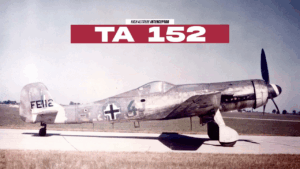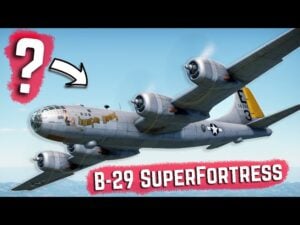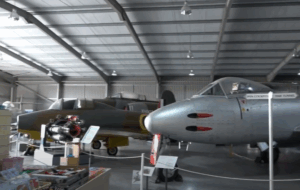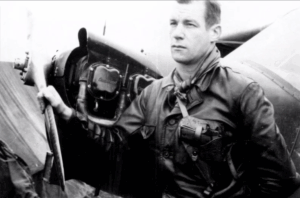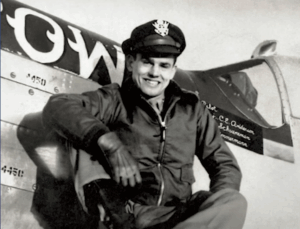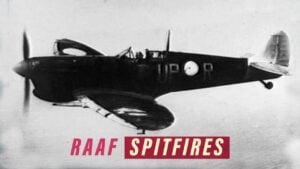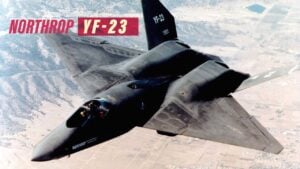The 10 Best WWII Planes That Never Saw Combat

PlaneHistoria / Facebook
World War II was a time of rapid technological advancements, especially in the field of aeronautics. While many aircraft models made it to the front lines, a notable few were left behind, despite their potential. This list highlights 10 exceptional planes that, for various reasons, never got the chance to show their worth in combat.
Miles M.20

The Miles M.20 was designed as a quick-response to Britain’s urgent need during a particularly tough time in the war. It boasted a smart, simple design, focusing on using wood to save on scarce materials like aluminum. The idea was to make an aircraft that could be produced quickly without compromising on performance. Although it was never used, the M.20 was designed to be faster than the Hurricane and almost as fast as the Spitfire, with the bonus of carrying more fuel which allowed it to fly longer distances.
Unfortunately, the M.20 was considered a backup and never made it to production. Britain’s airstrips were not overwhelmed as feared, thanks to the reliable service of existing models like the Spitfires and Hurricanes. Moreover, when presenting the M.20 as a potential aircraft for the Fleet Air Arm, it was overshadowed by the abundance of modified Hurricanes available.
Fiat G.56

The Fiat G.56 came into existence under complicated circumstances. Built for Italy when the country was divided and under German influence, this aircraft was a newer version of the Fiat G.55 – praised by many, including German pilots. The G.56 was equipped with a more powerful engine, making it incredibly fast and well-armed with three 20-mm cannons. Despite its superior performance compared to other fighters of the time, production was halted mainly due to resource constraints and political reasons.
This Italian marvel needed too many man-hours to build compared to German aircraft, which was deemed unfeasible. Additionally, with the war turning against them, the German authorities decided not to invest in an ally’s project, especially when high-powered engines were scarce.
Mitsubishi Ki 83

The Mitsubishi Ki 83 was a promising design from Japan. It was meant to be a high-hovering, long-range fighter with impressive speed and maneuverability for its size. Notably, it was possibly the fastest Japanese plane developed during the war. However, it fell victim to bad timing. Just as it was ready, Japan’s focus shifted to producing interceptors to defend against B-29 Superfortress bombers, leaving no resources for the Ki 83’s production.
The Ki 83 was a victim of the circumstances. Although it had the potential to be a game-changer, the increasing American air raids and Japan’s shifting priorities meant it never moved beyond the prototype stage. The sole surviving model was eventually taken to the US, valued for its design but ultimately forgotten and presumed scrapped.
Focke-Wulf Fw 187

The Focke-Wulf Fw 187 was a German design created by Kurt Tank, aiming to combine speed and range in a twin-engine format. Despite performing impressively in tests, outclassing even the then-popular Bf 109 in speed, it did not align with the German air force’s requirements, which favored larger, heavier fighters. The limitation in engine availability also played a role in its cancellation.
Though the Fw 187 had the potential for excellence, its design philosophy clashed with the prevailing military strategy. In a time when Germany needed aircraft fitting specific roles, the Fw 187’s versatile capabilities were overlooked. The focus on heavier aircraft for specific missions meant that this fast and agile fighter was left without a place in wartime strategy.
Grumman F5F ‘Skyrocket’

The Grumman F5F ‘Skyrocket’ was an ambitious project that aimed to improve upon the successful FF-1 design by actually shrinking it into a more agile variant. With its twin engines and sleek appearance, it was meant to take on multiple roles—speaking to its versatility. Despite this, it only saw a brief stint as a prototype due to the U.S. Navy’s decision to focus on single-engine fighters.
The project’s brief life did, however, contribute to the design knowledge that would eventually be part of the successful Tigercat and Bearcat programs. It’s a reminder that not all design efforts result in direct implementation, but can often inform future advancements.
Heinkel He 280

The Heinkel He 280 holds the notable distinction of being the world’s first jet expressly designed as a fighter, despite never engaging in combat. It had a relatively swift development and even boasted impressive features such as an ejection seat. Initial tests displayed promise, yet it was eventually overshadowed by the Messerschmitt Me 262.
One can only speculate on the impact the He 280 might have had on aerial warfare had it been adopted for service. Its story underscores the harsh nature of progress where even groundbreaking designs can be left behind.
Martin-Baker MB.3/MB.5

The Martin-Baker MB.3 and its successor, the MB.5, were potentially unmatched in terms of raw performance for propeller-driven fighters. The MB.5, in particular, was regarded as one of the finest piston-engined fighters ever flown, with exceptional speed and maneuverability. Despite this, the designs never moved into production.
They arrived at a time when jet aircraft were beginning to emerge, dimming their prospects. Ironically, this would benefit future pilots, as Martin-Baker would redirect its focus toward pioneering ejection seat technology—a field in which it remains influential.
Polikarpov I-185

The Polikarpov I-185 was a Russian design that could have been a mighty asset. It was fast, well-armed, and had a powerful engine. Its development, however, was plagued by engine troubles and organizational issues. Moreover, the death of its chief designer, Nikolai Polikarpov, led to the project losing its most influential advocate.
While it performed admirably in trials, the I-185 had the misfortune of arriving at an inconvenient time, with the Soviet Union deciding to produce existing, battle-tested designs rather than risking a shift to a new aircraft.
Beechcraft XA-38 Grizzly

The Beechcraft XA-38 Grizzly was designed as a potent ground-attack aircraft, boasting a 75mm cannon to destroy armored targets. It was powerful and fast, making it a potentially formidable weapon.
However, its reliance on the Wright R-3350 engines—a scarce resource required for the B-29 Superfortress—sealed its fate. With only a couple of prototypes built, the Grizzly was yet another instance where promising technology was eclipsed by the larger strategic demands of the war.
Heinkel He 100

Lastly, the Heinkel He 100 was a record breaker in terms of speed, pushing the limits with innovative cooling systems and aerodynamic design. It might have been one of the fastest fighters of its era had it been deployed. Its development, however, was hampered by political decisions and the focus on what would become the Bf 109.
Additionally, propaganda efforts misled both Germans and allies alike, portraying the He 100 as an active combat aircraft when it was not. It stands out as a tantalizing glimpse of what could have been in the fight for air superiority.













